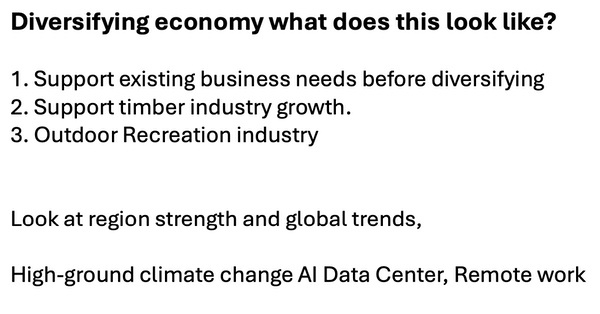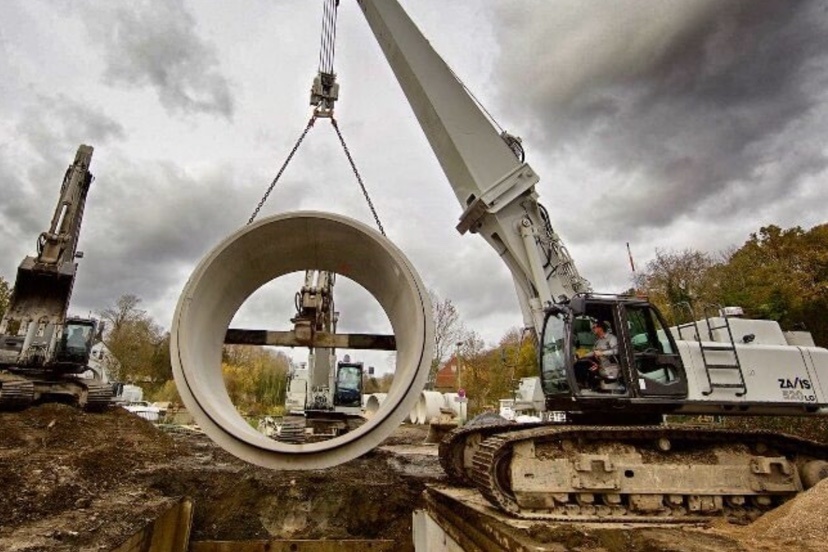The prophets of a brave new world, captains of industry
Have visions grand, and great designs,
But none have room for me…
— from “Honest Work” by Todd Rundgren, 1985.
Back in January, the Archuleta Board of County Commissioners were treated to a presentation by Emily Lashbrooke, Executive Director for the non-profit Pagosa Springs Community Development Corporation, more affectionately known as the “CDC”. She illustrated her presentation with a PowerPoint slide show.
I’ve been impressed with what Ms. Lashbrooke has been able to accomplish since she came onboard at the CDC, with direction from the volunteer CDC Board of Directors.
On January 7, Ms. Lashbrooke was sharing some input the CDC had gathered recently from a Pagosa business community. She also shared information about Colorado’s “Community Revitalization Authority” law. More about that law, later.
As I understand it, the input session with the business owners had purposely not included elected officials… so that the conversation could be ‘candid’.
Apparently, some business owners are fearful of speaking openly and frankly, when elected officials are in the room.
“I do believe we captured some candid conversation, and it will be reflected here in this presentation. One of the questions was, ‘What does diversifying the economy look like?’ Really, it’s supporting existing businesses and helping them grow. That’s pretty much our job at the CDC, to foster growth and development.
“Support timber industry growth? That is a big industry right now, with the forest and the timber and all of that.
“And then, outdoor recreation that would complement the ‘shoulder seasons’. It might look like a ski hill, or sledding, or things that complement the shoulder seasons. So that came out.
“Also, looking at the region’s strengths, and global trends. So, technology trends. Things like that…”

Traditionally, “Community Development Corporations” in the U.S. have concerned themselves with community development. Housing, for example. Transportation. Social needs. Traditionally, these non-profit organizations have focused on serving lower-income residents or struggling neighborhoods.
Our local CDC was created specifically to promote “economic development”… to foster growth and development… which isn’t necessarily the same thing as “community development”.
We have many issues here in Pagosa Springs that our community leaders and elected officials think about, and sometimes attempt to address. Failing infrastructure, for example, due to deferred maintenance. Lack of workforce housing. Hunger. Domestic violence. A flammable landscape. Water and sewer issues. Lack of trained and willing employees.
One common assumption is, that ‘economic development’ is key to addressing these issues. That, if we grow the amount of money flowing in the community, these issues will get addressed, almost by magic.
A bit of background. The Pagosa Springs Community Development Corporation was conceived about 15 years ago to serve as our local ‘economic development’ agency, following the demise of the Archuleta Economic Development Association. The AEDA, a business association dependent upon voluntary financial support from the Pagosa business community, had been struggling financially for several years, and finally threw in the towel.
In response, the government leaders at the Town and County decided to create a non-profit organization, the Pagosa Springs Community Development Corporation, funded almost entirely by local taxes, based on the idea that the agency would eventually be supported by grants and business memberships, with only incidental tax support. But over the next 10 years, the CDC was plagued by a series of controversial leadership changes and an ongoing failure to successfully acquire grants and community support. The organization also struggled to find a reason to exist.
“Economic development” is presumed to be a necessary activity in many American communities… maybe in most communities… and the need for local and state tax support for “ED” is pretty much taken for granted.
The small rural town of Pagosa Springs had somehow survived for 100 years — between the 1880s and the 1980s — without a tax-funded economic development organization. But perhaps, it hadn’t “thrived”?
If you research “economic development” on Wikipedia, you can find an article that frames its history in terms of the U.S. aims following World War II, to bring about peace and prosperity to the entire globe, through various attempts to promote “industrialization” of both manufacturing and agriculture.
Which can also be seen as an attempt to extend Capitalism to every corner of the globe, at a time when Communism appeared to be spreading.
There have been several major phases of development theory since 1945. Alexander Gerschenkron argued that the less developed the country is at the outset of economic development (relative to others), the more likely certain conditions are to occur. Hence, all countries do not progress similarly…
During Robert McNamara’s 13 years at the World Bank, he introduced key changes, most notably, shifting the Bank’s economic development policies toward targeted poverty reduction… According to Martha Finnemore, the World Bank under McNamara’s tenure “sold” states [the poverty reduction agenda] “through a mixture of persuasion and coercion…”
One of the keys to “economic development” as practiced in the second half of the 20th century, was a push to replace agricultural economies with industrial economies. This was considered “progress”, and as a way to reduce poverty and bring about world peace. If we compare the percentage of the global population living in dire poverty in 1950, with not enough to eat — about 3 out of 5 persons — with the percentage in 2000 — about 1 out of 5 persons — the progress would appear to be significant.
We don’t have similar data here in Pagosa Springs. We can’t easily compare the percentage of people suffering from hunger in Archuleta County in 1950, with the percentage today. But we do know that in 1950, the economy was based largely on agriculture, and in 2025, it’s based largely on retirees, and tourism.
How do we measure ‘progress’, in such a situation?
Or maybe we’re afraid to really look.

